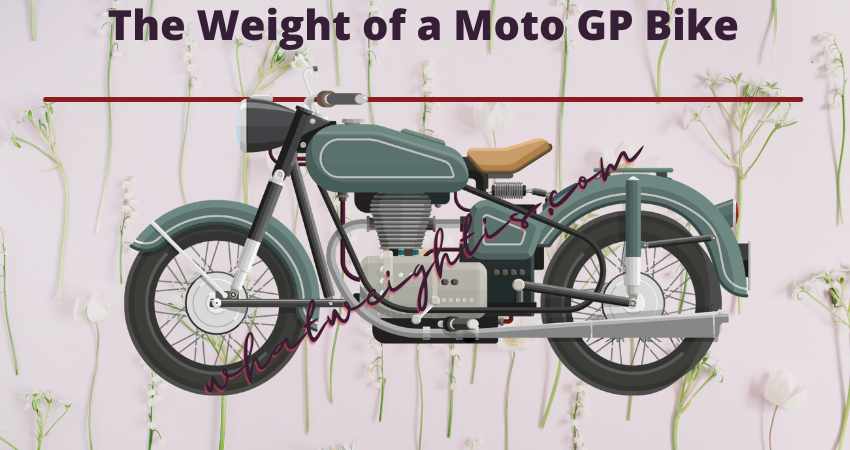If you’re a fitness enthusiast and weight-loss enthusiast, chances are you’ve read and heard about the benefits of weight loss. After all, studies have shown that weight loss can improve overall health. It gives boost to energy levels while reducing weight. It also improves heart health and cholesterol levels, as well as appearance. However, weight loss is not easy. Most people struggle with it. There are times when we feel stuck or discouraged. But if you’re looking for an easy way to lose weight and get fit, look no further than Moto GP bikes. In this blog, we’ll talk about how much weight Moto GP bikes actually have and the benefits of using them for weight loss.

Moto GP bikes and their weight
Moto GP bikes are some of the most powerful and heavy motorcycles in the world. Despite their weight, these bikes are able to reach high speeds. The Weight of a Moto GP Bike is 157 kg (346.1 lbs.).
But the weight of a Moto GP bike does not affect its performance in the same way as other types of bikes. The weight of a Moto GP bike is an important factor to consider when purchasing a motorcycle. This factor can influence the price of a bike and also determine how comfortable it is to ride. Additionally, the weight of a Moto GP bike helps to increase stability and handling during racing. Thus, it’s vital for you to consider the weight of your chosen bike before purchasing it.
Why Moto GP bikes are so heavy
The weight of a Moto GP bike is critical to its performance. Moto GP bikes are built to withstand the extreme G-forces exerted during racing. This means they’re designed to handle a lot of weight, and the heavier they are, the better they handle.
The weight of a Moto GP bike can affect the bike’s handling and acceleration, as well as its speed and stability. It is vital for Moto GP riders to be able to control their bikes accurately and ride them with confidence, so the weight of their bikes is taken into account when designing their racing machines.
What are the benefits of using a Moto GP bike?
Moto GP bikes are built for speed and performance. They have lightweight materials, a racing engine and suspension that can withstand extreme weather conditions. These bikes are designed to minimize aerodynamic drag, and they’re also easy to operate. With these features, moto gp bikes are great for racing but not for everyday use.
How do Moto GP bikes perform with a heavy weight?
Moto GP bikes have very heavy weight to improve performance. To make a Moto GP bike heavier, teams use extra materials and components, such as race tires, that weigh more than those used on road bikes. These components allow the team to add weight without compromising the suspension or handling of the bike.
But even with all the extra weight and components, Moto GP bikes can still perform well without struggling. This is because of their suspension geometry and chassis design, both of which have been painstakingly fine-tuned to produce superior handling and braking in any condition. A heavy Moto GP bike won’t feel cumbersome on the track, but will be able to reach top speeds easily.
Frequently Asked Questions
How does the weight of a Moto GP bike affect the rider’s performance?
Moto GP bikes are typically very heavy, and this weight has a significant impact on the rider’s performance. Heavy bikes create more drag and are less responsive, which means that the rider will have to work harder to ride them well. Lighter bikes are less stable and require more skill from the rider, as they are less responsive and susceptible to bouncing around. The heavier the bike, the more power the rider will be able to generate.
How Much Does motorcycle Weigh
Conclusion
There is no denying that the weight of a motorcycle impacts the performance of all sorts of ways. The weight of a motorcycle makes it easier for you to handle, and also ensures that you don’t tire easily. While there is no denying the fact that racing with lighter motorcycles would be more efficient in long distances, racing with heavy motorcycles is also a common phenomenon. Besides, racing with heavier motorcycles can help you maintain higher speeds on longer distances. However, racing with heavy bikes isn’t always a good idea. You must look at multiple aspects such as your riding skill, engine performance, and fuel efficiency before deciding which bike to use. Read more on weight loss tips here.
Mr. Jahangir Alam is an Electrical & Electronics Engineer with a wide range of experience in several fields of Engineering. He finds engineering articles to be very interesting, and that is why he likes to write them. To know more about him, please click here.

